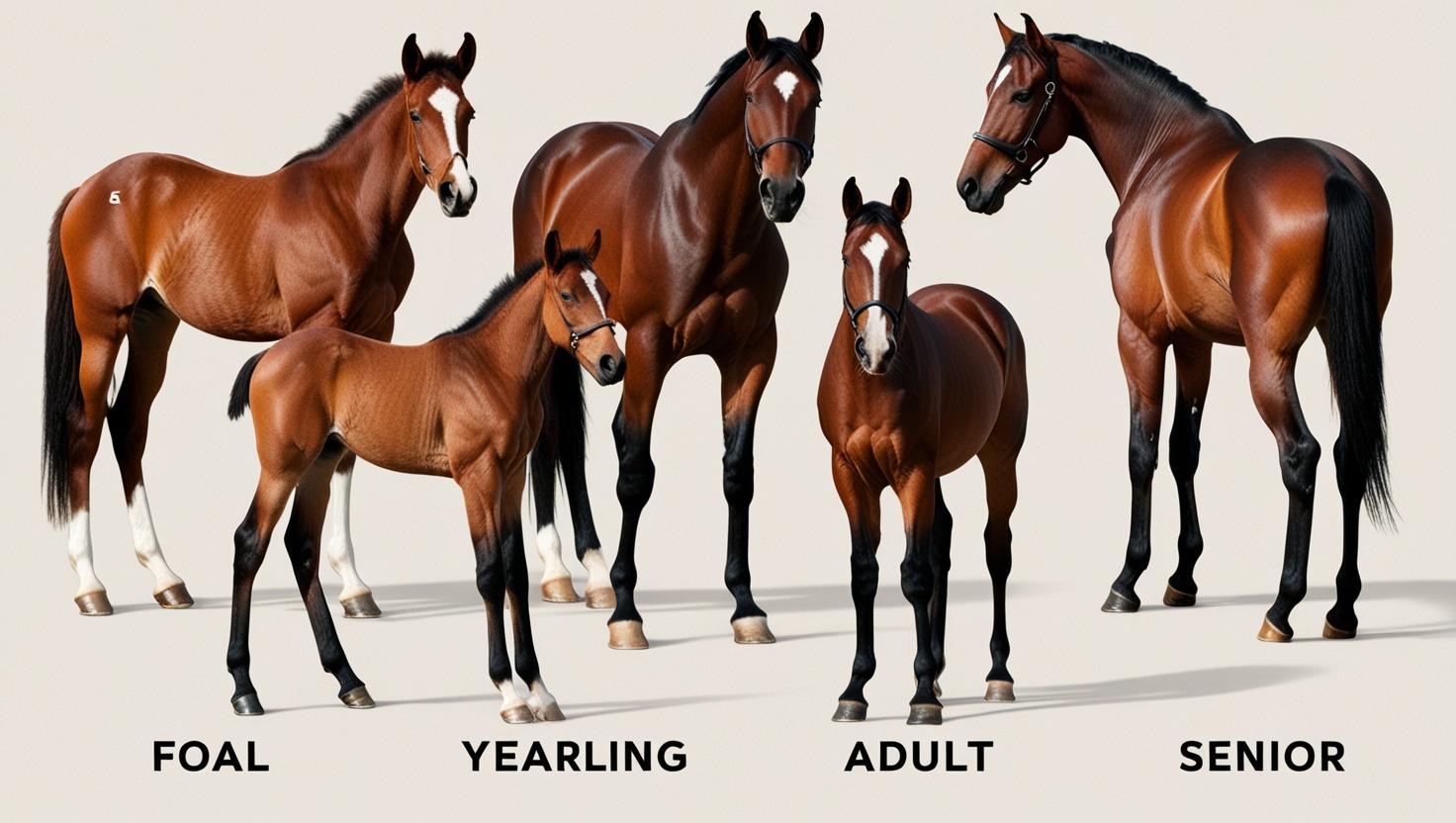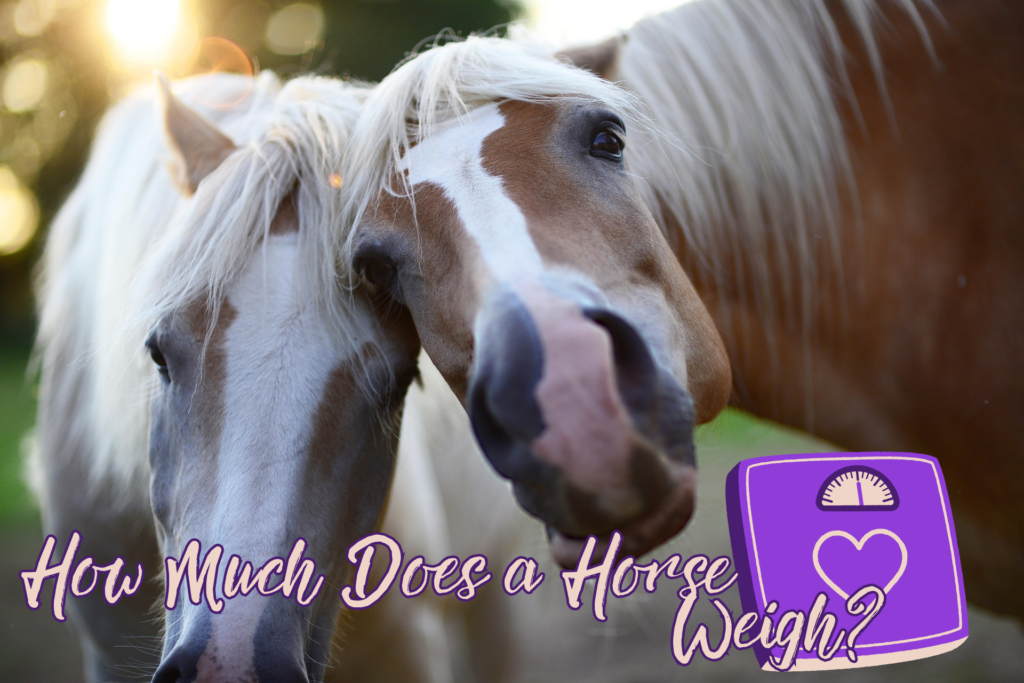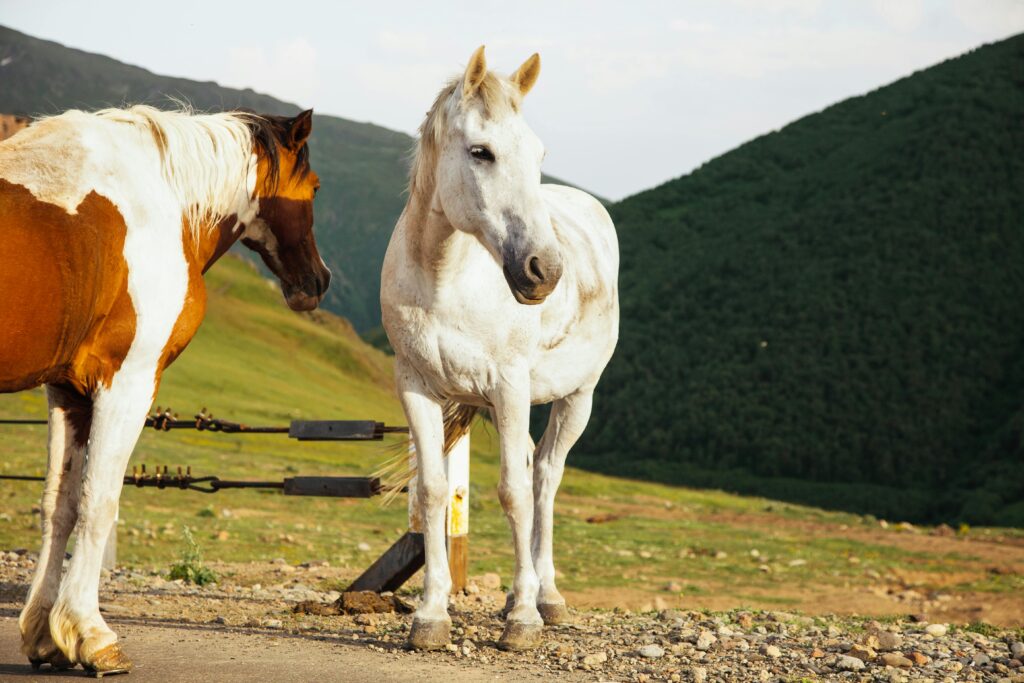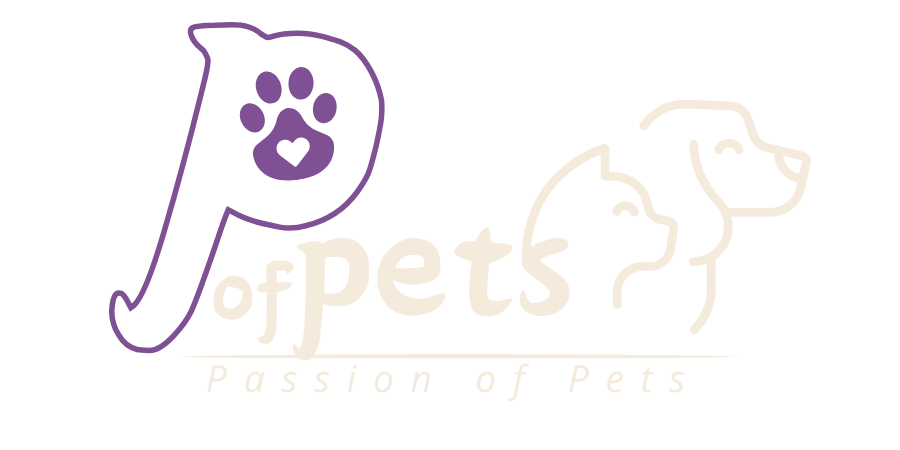how many stages in a horses life?
They are magnificent animals that have continued to amaze people for years. With their great strides, horses were our workers, companions, and athletes. Understanding the life cycle of the horse is essential for every person who owns, cares for, or admires this great animal. By knowing various stages of a horse’s life, you will be able to provide the best possible care; make sure they are healthy, happy, and lead a productive life.
In this blog, we’ll explore the lifecycle of a horse, breaking it down into distinct stages. We’ll discuss the characteristics of each stage, the care requirements, and the factors that influence their development and longevity. Whether you’re a seasoned equestrian or a curious horse enthusiast, this guide will deepen your understanding of these magnificent animals.
Introduction to a Horse’s Life Cycle
The life cycle of horses is a wonderful journey that lasts for several decades. The average life span of horses lies between 25 to 30 years, but with good care, many can live into their 40s. The stages in the horse’s life include:
- Foal Stage (Birth to 6 months)
- Weanling Stage (6 months to 1 year)
- Yearling Stage (1 to 2 years)
- Juvenile Stage (2 to 4 years)
- Adulthood (4 to 15 years)
- Senior Years (15 years and older)
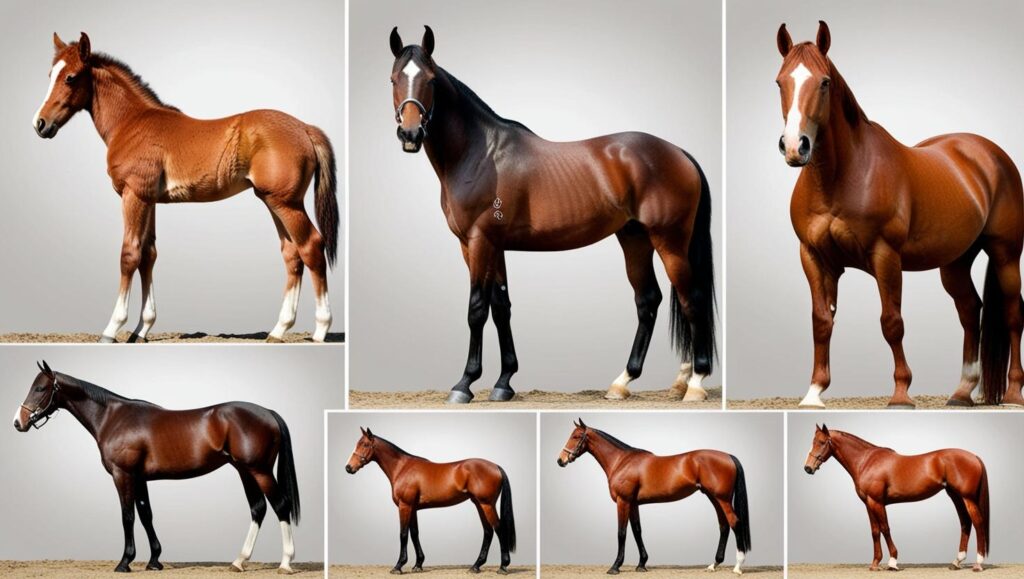
Each stage of their life brings new challenges and achievements. It befits to talk about each stage individually in order to identify the unique features of every stage and how to look after horses in each stage of their lives.
The Early Years: Foal and Weanling Stage
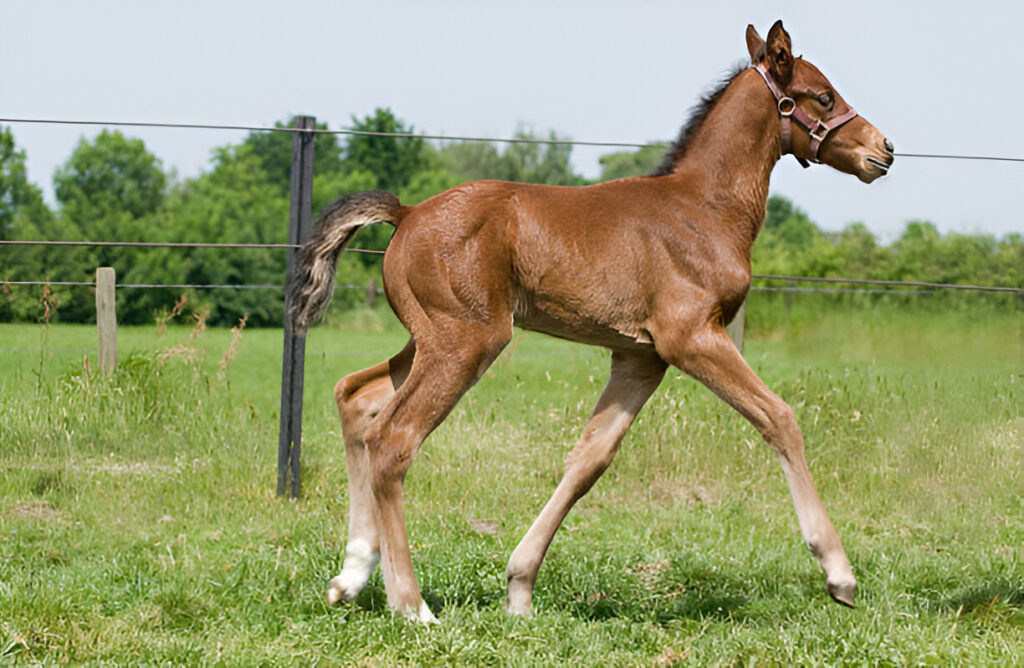
Foal Stage (Birth to 6 Months)
Life stages begin with the foal stage. A foal is a newborn horse, and this is a very critical period in their lives. Foals are born after an 11-month gestation period and usually are able to stand and walk within an hour of birth. This incredible ability is a survival mechanism inherited from their wild ancestors.
Key Characteristics:
- Rapid Growth: The foals grow at a very rapid rate, sometimes up to 3 pounds in the first few weeks.
- Dependency: Foals are dependent on their mother’s milk for nutrition for the first few months.
- Curiosity and Playfulness: By nature, foals are curious and spend most of their time playing, which helps them attain coordination and social skills.
Care Tips:
- Nutrition: Allow her to suck well, as this is the most vital source of nutrition in a foal.
- Health Checks: It should have frequent visits from a veterinarian in order to keep a record of growth and for checking on the occurrence of diseases.
- Socialization: Let it mingle with other horses as socialization also develops in young stages.
Weanling Stage (6 Months to 1 Year)
The weanling stage is that period when the foal is taken away from its mother and begins to eat solid food. This is a very important transition in the horse’s life, whereby the animal becomes somewhat independent.
Key Characteristics:
- Diet Transition: Weanlings start to shift from milk to hay, grass, and grain.
- Growth Spurts: Marked growth spurts characterize this stage, especially in height and the development of muscles.
- Training Introduction: Basic training, like halter training, can be initiated at this stage.
Care Tips:
- Balanced Diet: High in protein, vitamins, and minerals for growth.
- Safe Environment: Weanling should have a safe area to run and play.
- Gentle Training: Basic commands and handling can be started now to gain confidence and trust.
The Yearling and Juvenile Stage: Growing Up
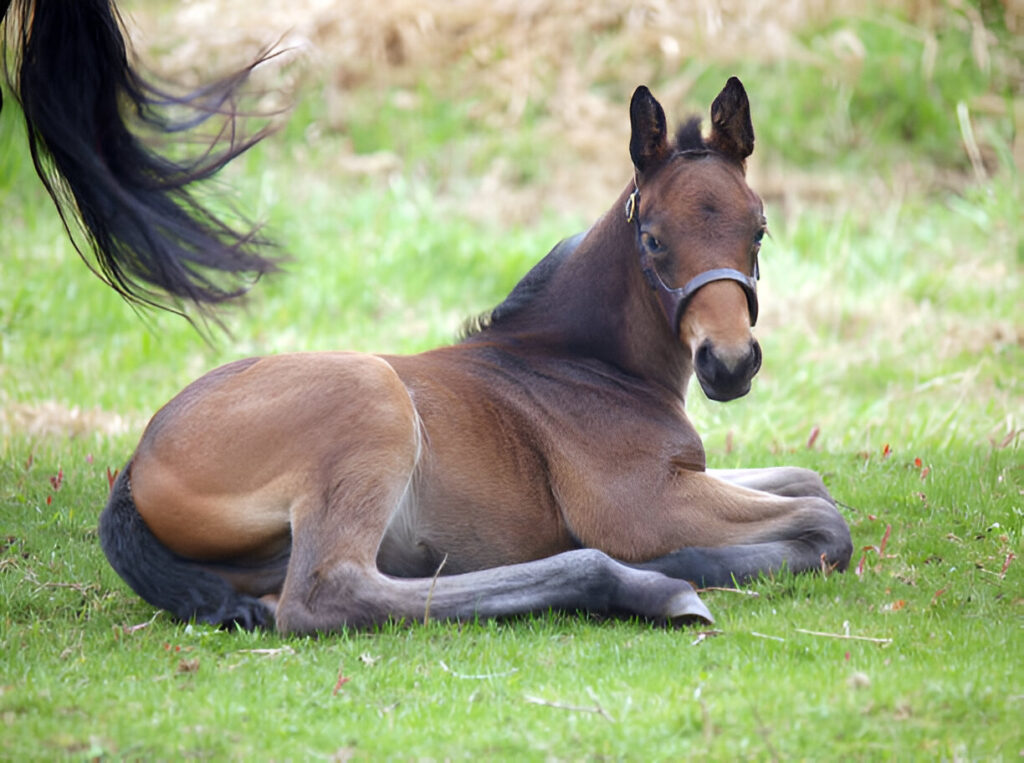
Yearling Stage (1 to 2 Years)
The yearling stage is the period when the horse begins to look like a miniature adult. Yearlings are bundles of energy and curiosity, and this stage is very important in terms of physical and mental development.
Key Characteristics:
- Continued Growth: Yearlings continue to grow, though at a slower rate compared to weanlings.
- Social Development: They learn vital social skills through interaction with other horses.
- Exploration: Yearlings are highly exploratory and may test boundaries.
Care Tips:
- Regular Exercise: Provide exercise for the maintenance of good muscles and bones.
- Consistent Training: Stick to basic training for good behavior.
- Monitor Diet: Change their diet according to their nutritional requirement changes.
Juvenile Stage (2 to 4 Years)
The juvenile stage is also well-known as the “teenage” period of a horse’s life. In this stage, horses develop both physically and behaviorally to near maturity.
Key Characteristics:
- Physical Maturity: Horses reach about 90% of their adult height by age 4.
- Behavioral Changes: Juveniles may rebel as they push the boundaries and test their limits.
- Training Progression: Now is an excellent time for more advanced training, such as being ridden or driven. Care Tips
- Structured Training: A consistent training regime will help build and reaffirm good practices.
- Patience: Be patient with behavioral challenges, as this is a normal part of development.
- Health Monitoring: Regular veterinary care is important to address any growth-related issues.
Maturity and Adulthood in Horses
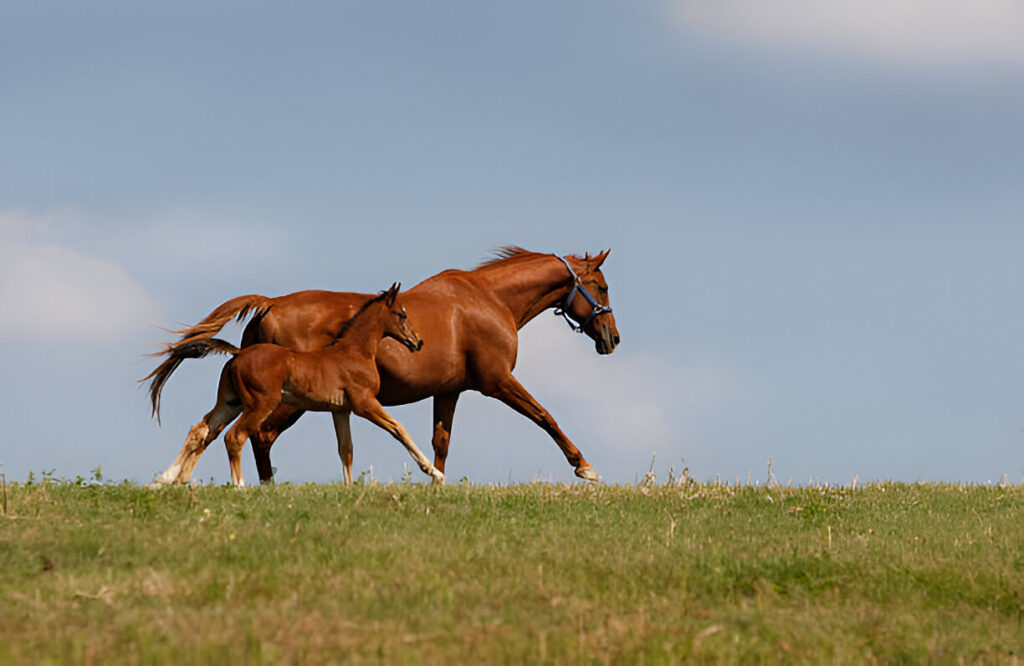
Adulthood (4 to 15 Years)
An adult horse is one that has attained full growth and is ready for higher responsibility, be it as a riding horse, working horse, or breeding horse. This period is generally recognized as the peak of a horse’s life.
Key Characteristics:
- Peak Performance: Adults are at the peak of their physical and mental state and are now fully capable for work or competition.
- Stable Behavior: They tend to be calmer and less unpredictable than younger horses.
- Reproductive Maturity: Mares and stallions can breed at this stage.
Care Tips:
- Regular Exercise: Keep them active to maintain physical and mental health.
- Balanced Diet: Change their diet depending on activity level and workload.
- Routine Check-ups: Keep up regular veterinary care to ensure they remain healthy.
The Senior Years: Understanding Older Horses
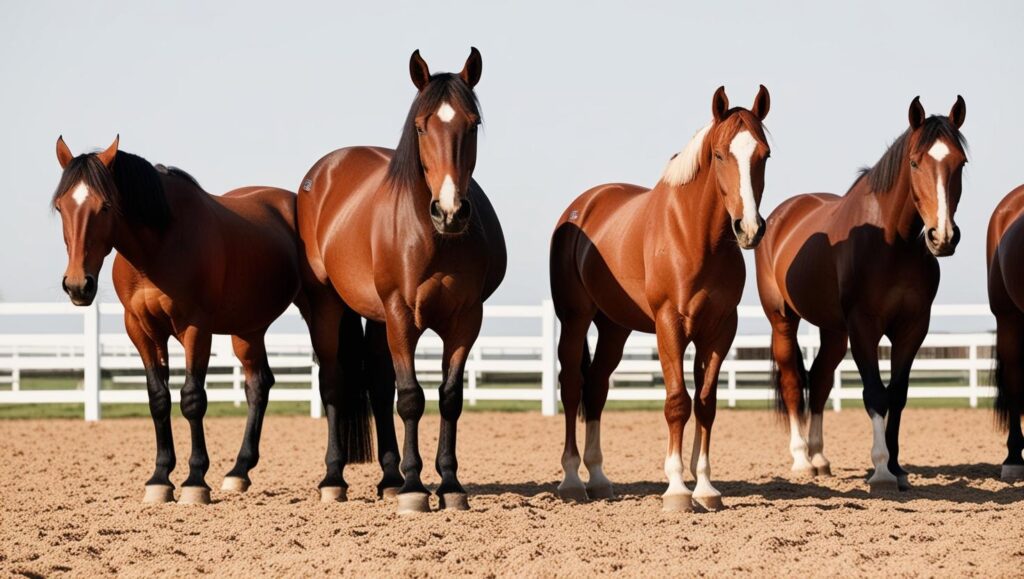
Senior Years (15 Years and Older)
As horses enter their senior years, extra special care is called for to ensure a continued quality life. While there are many horses that stay vigorous into their 20s, others may begin to show their age at an earlier point.
Key Characteristics:
- Slower Metabolism: Difficulty in maintaining weight; may require special feeding.
- Health Issues: Arthritis, dental problems, and loss of vision are some of the health issues to which they become most vulnerable.
- Less Active: An older horse may not be quite as active, though light exercise still goes a long way.
Care Tips:
- Specialized Diet: A diet specific to their needs would include more digestible foods and supplements.
- Comfortable Living: Let them have a warm, dry place to rest and access to fresh water.
- Regular Vet Visits: Regular visits to the vet are crucial for the early detection and resolution of age-related health problems.
Factors of Life Expectancy and How They Influence Each Stage in the Life of a Horse
Many are the factors that surround the life span of a horse, each playing a critical role in determining not only how long it lives but also the quality of life at every stage. From genetics to environmental conditions, nutrition, healthcare, and exercise, such factors come into play to shape the development, health, and longevity of the horse. Understanding how these factors influence each stage of a horse’s life can enable owners and caretakers to provide the best possible care for their equine companions.
Let’s explore in detail these factors and how they influence the different stages of a horse’s life.
Genetics: The Blueprint of Longevity
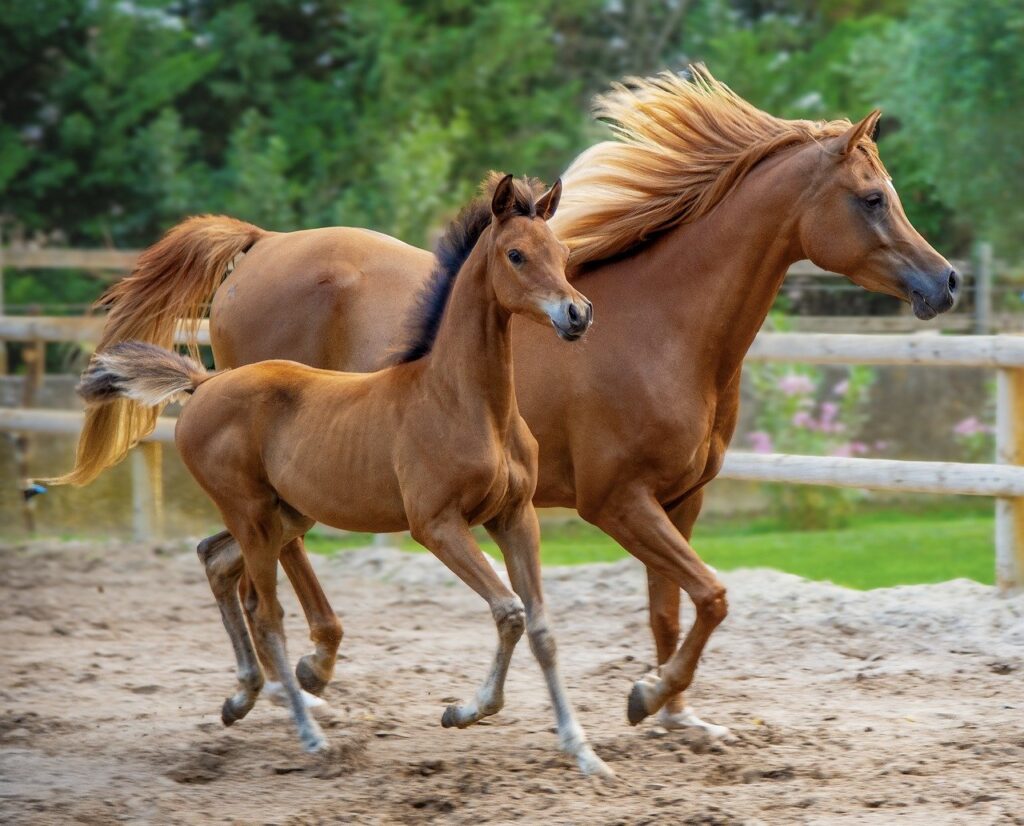
Image by patrick gantz from Pixabay
Genetics is one of the leading factors in defining the life-span of a horse. Similar to humans, this genetic makeup within a horse will make it prone to specific health problems, its general hardiness, and its natural life span.
How Genetics Influence Each Stage:
Genetics may play a role in the growth and development rate of the foal. Certain breeds, like Thoroughbreds are bred for faster growth rates. Others, like draft horses, may have slower growth rates. Genetic predispositions to problems such as developmental orthopedic diseases can manifest at this time.
- Yearling and Juvenile Stage: The growing horse will still be influenced by genetics through the development of its skeleton and muscles. Whereas some breeds, like Arabians, may live well into their 30s, larger breeds such as Shires may not, due to the wear and tear on their body.
- Adulthood: Genetic factors may dictate the horse’s performance in certain roles, such as racing, jumping, or endurance riding. Some breeds are more prone to conditions such as laminitis or colic that can affect their quality of life during adulthood.
- Senior Years: Horses with strong genetic backgrounds for longevity may age more gracefully, while others may experience age-related health issues earlier in life.
Care Tips:
- Study breed-specific traits and predispositions for health problems in your horse.
Collaborate with good breeders for healthy genetic lines.
Be observant of breed-specific problems and address them as early as possible.
Environment: The Foundation of Well-Being
The environment is one of the most significant factors affecting a horse’s physical and mental well-being. A safe, clean, and stress-free environment will go a long way in adding to the quality of life and life span of a horse.
How Environment Influences Each Stage:
Foal and Weanling Stage: This critical phase is sensitive to environmental stressors. A clean, spacious environment with proper shelter promotes growth and a strong immune system in foals and weanlings.
Yearling and Juvenile Stage: Young horses should be given space for running and playing skills, important to be developed both physically and socially. In fact, crowding and improper living may eventually affect horses due to the emergence of stress and behavioral problems.
- Adulthood: Horses are happy when they can enjoy turnout and time in the stable in equal measure. Poor conditions inside a stable can cause respiratory problems or infection, such as damp bedding and lack of ventilation.
- Older Age: An older horse needs a comfortable and stress-free environment. For them, it is very important to have soft bedding, have food and water easily accessible, and to be out of the wind and rain.
Care Tips:
Clean, dry shelter and adequate turnout space Environmental stressors such as loud noises or aggressive herd mates should be minimal. Regular cleaning of stables and paddocks to minimize potential for disease spread.
Nutrition: Fuel for Growth and Health
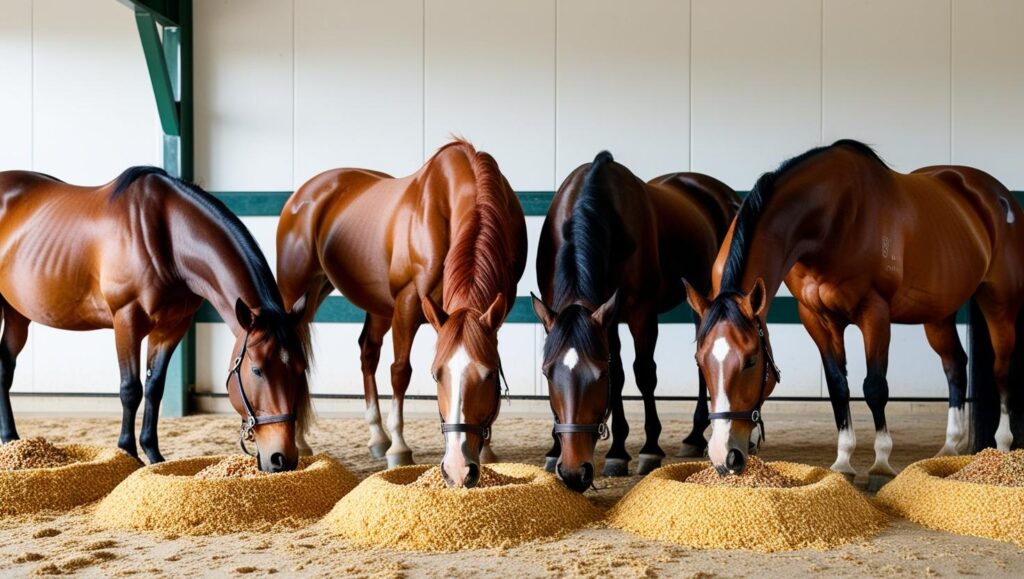
Nutrition is a cornerstone of a horse’s health and longevity. A diet appropriate for each life stage ensures the horse gets what it needs in terms of growth, energy, and overall well-being.
How Nutrition Influences Each Stage:
- Foal and Weanling Stage: Nutrition is very important during this stage of life, as growth and development are very rapid. While foals can start with their mother’s milk, they will quickly need a high-protein, vitamin- and mineral-rich diet as they begin to eat solid foods.
- Yearling and Juvenile Stage: Horses at this age require nutrition that supports continued growth and muscling. Overfeeding or poorly balanced diets can result in developmental disorders such as osteochondrosis.
- Adulthood: Adult horses require a diet matched by their activity level. Performance horses might need more calories, while the sedentary horse requires a diet that will not let them become fat.
- Senior Years: Most aged horses are unable to sustain proper weight and thus need more types of digestible foods. Such foods may be provided for using senior feeds or soaked hay. This is because of some problems with their teeth, while others cannot chew as their teeth wear down.
- Collaborate with a veterinarian or equine nutritionist to develop an appropriate diet for each life stage.
- Closely monitor body condition and make adjustments in feeding accordingly.
- Provide access to clean, fresh water at all times.
Health Care: Prevention and Treatment
Regular veterinary attention is crucial in preventing or treating diseases affecting the horse’s life span and quality of life.
How Health Care Affects Each Stage:
- Foal and Weanling Stage: Foals require vaccinations, deworming, and regular check-ups to ensure that they are growing properly and free from disease.
- Yearling and Juvenile Stage: Young horses need continued vaccinations, dental checks, and observation for developmental problems.
- Adulthood: Adult horses benefit from routine veterinary care, including dental exams, vaccinations, and preventive treatments for conditions like colic or laminitis.
- Senior Years: For a senior horse, it is a must to get more frequent trips to the doctor for the following disease: arthritis, Cushing’s disease, or dental related problems.
Care Tips:
- Veterinary check-ups and vaccinations.
Updated deworming and dental care
Address health issue on time with no further complicating. —
Exercise: Building Strength and Resilience
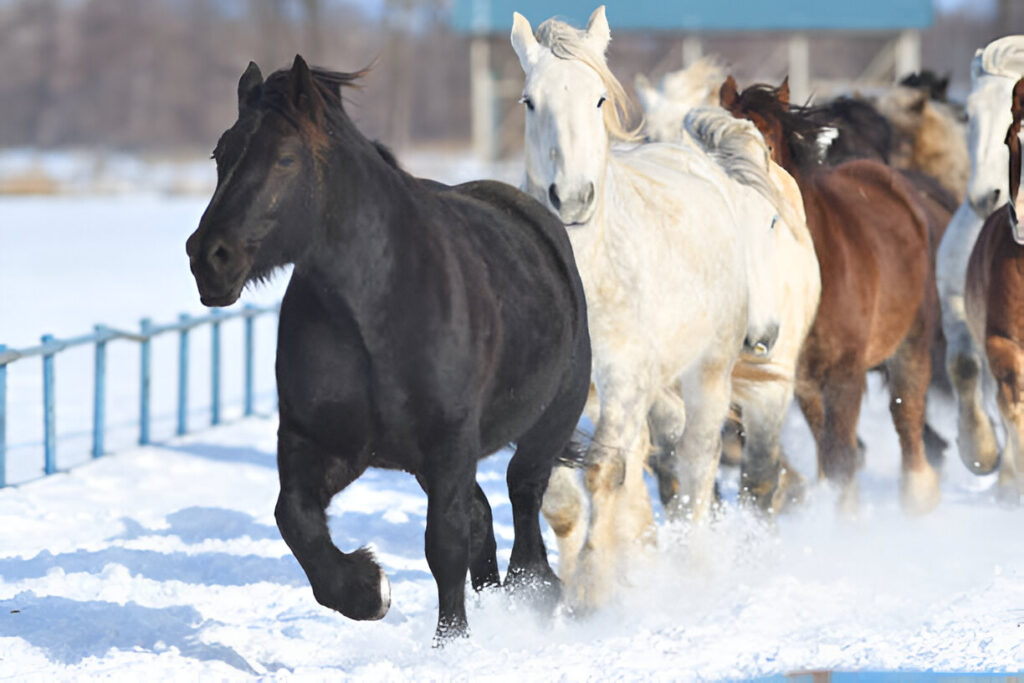
Regular exercise is important for the physical and mental health of horses. This helps build muscles, strengthens the joints, and prevents obesity, along with mental stimulation.
How Exercise Influences Each Stage:
- Foal and Weanling Stage: Foals and weanlings should have room to run and play to help them develop coordination and socialization skills.
- Yearling and Juvenile Stage: Light training coupled with regular turnout helps young horses build up strength and gets them ready for more advanced work.
- Adulthood: Adult horses need consistent exercise to keep them fit and prevent boredom. The type and intensity of exercise will relate to their role, be it for riding, driving, or leisure.
- Senior Years: Even though elderly horses are not as active, light exercises like walking or light turnout will help maintain joint mobility and muscle tone.
Care Tips:
- Regular turnout and free movement
- Exercise should be designed according to age, fitness, and role of the horse.
- Avoid overworking young or senior horses to prevent injury.
Conclusion:
Caring for Your Horse Through Every Life Stage for Optimal Health and Longevity
Understanding the life stage of a horse is the key to the best possible care. From playful foal to stately senior, each stage in a horse’s life brings its share of joys and challenges. When you tailor your care to meet changing needs, you are assured that throughout their life your horse will be healthy, happy, and thriving.
From spirited yearlings to wise old mares, each stage in a horse’s life presents an opportunity to grow closer to these amazing animals. With proper nutrition, regular veterinary care, and plenty of love, your horse can enjoy a long, fulfilling life by your side.
So the next time you peer into the eyes of your equine friend, remember the journey that he has experienced-and the journey yet to be taken. For a horse’s life is more than just various stages; it is a tale of growth and resilience, of partnership. And you, as caretaker, have much to do with shaping that story.

